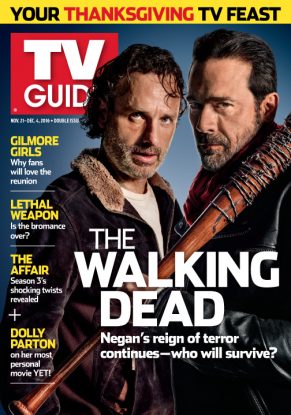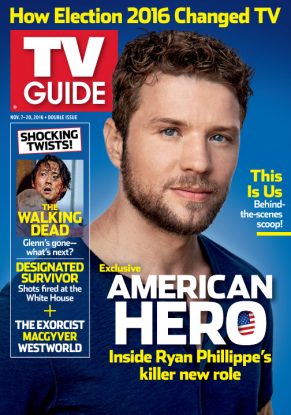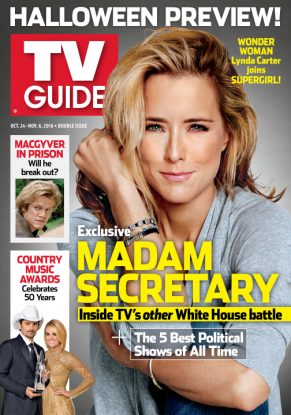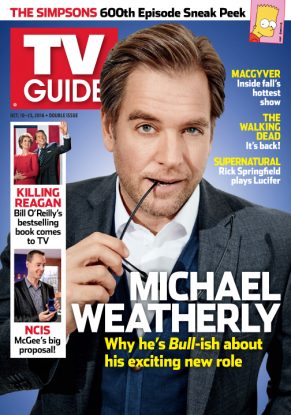The Walking Dead: Negan’s Reign of Terror is in Full Swing
It’s not about the zombies. Never has been, really. AMC’s The Walking Dead, now in its seventh season, continues to earn monster ratings with its apocalyptic tale of a world overtaken by flesh-eating corpses. In fact, the horrifying and controversial October 23 episode, in which good guys/audience favorites Glenn (Steven Yeun) and Abraham (Michael Cudlitz) were bashed to death by the show’s new baseball-bat-wielding supervillain, Negan (Jeffrey Dean Morgan), drew an audience of 17 million—the second-highest rating in the program’s history. It also marked an epic shift in the series. Gradually those hordes of voracious cadavers have become, for the most part, rather manageable, and it’s now time to face the harsh truth foreshadowed in Robert Kirkman’s acclaimed comic book series: The dead aren’t the real threat here.
“It’s increasingly clear in the world of TWD that the bigger problem is the living,” Morgan says. “By now, pretty much every character has figured out how to deal with the zombies, but they haven’t figured out how to deal with each other, and that is a far greater danger to what’s left of mankind. Now this is Negan’s world, and the viewers are going to have to strap it on and live in it with us.”
This increasingly hopeless scenario—and the continued loss of beloved characters—comes with no apology from executive producer Scott M. Gimple. “Yes, this season has been brutal,” he concedes, “but it’s like Krypton exploding or Bruce Wayne’s parents dying or Luke Skywalker leaving Tatooine. This is our story. This is what propels us forward. We’re asking the audience to have faith and fight the fight, right alongside the characters they love.” Read the full story here.
Also in this issue:
• Gilmore Girls: Our report from the set of the beloved dramedy’s Netflix reboot, A Year in the Life.
• Savage Kingdom: A behind-the-scenes look at Nat Geo Wild’s ambitious new safari docuseries.
• The Affair: The third season of Showtime’s juicy drama jumps ahead and takes a darker tone.
• Dolly Parton: The country music icon is back with another holiday movie on NBC, Christmas of Many Colors: Circle of Love.
• Plus: Arrow’s 100th episode, Scorpion, Vikings, Christmas in Rockefeller Center, Top Chef, Days of Our Lives and the best of movies, streaming, sports and more.





